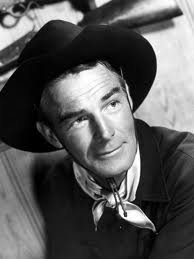The scene can be as spectacular as a view from above showing only the tops of city skyscrapers poking through or as disorienting as a sheet of gray directly in front of you.
While common in some locations, fog can simply amaze us.
According to the Glossary of Meteorology from the American Meteorological Society, fog is a collection of water droplets suspended in the atmosphere in the vicinity of the earth's surface that affects visibility. Specifically, fog reduces visibility below 1 kilometer (or 0.62 miles).
The most common form of fog, known as radiation fog, typically occurs on clear nights as the earth's surface cools moist air immediately above it. If just enough light wind is present – a couple of mph, at most – this chilled air can be gently stirred through a deeper layer, forming a deeper radiation fog.
Often in the fall, you'll see morning fog hug lower valleys of the Appalachians. This valley fog, really just a type of radiation fog, results from cold, dense air draining down mountain slopes at night, collecting in the valley floors, then forming as any other radiation fog described above.
Incidentally, let's dispel a myth. Fog does not burn off, per se.
As solar energy heats the ground near the fog's edge, vertical mixing brings drier air into the fog's edge, evaporating it. A typical ground fog will dissipate first at its edges, where its depth is more shallow, working its way toward the thicker center of the fog.
Sometimes fog forms when warm air moves over a cold surface. Warm air moving over snow-covered ground in winter and sea fog drawn inland over a cool land surface along the West Coast are two prime examples of so-called advection fog.
Unlike radiation fog,
advection fog can sometimes be seen as moving laterally along or near the ground.
When surface temperatures are below freezing, water droplets in a fog are supercooled, waiting to freeze on contact with any subfreezing surface. These freezing fog events can be dangerous not only for a reduction in visibility but also for a light accumulation of ice on roads, particularly bridges and overpasses.
At even colder temperatures, fog made up solely of tiny ice crystals will form. This ice fog is common in the winter months in parts of Alaska's interior, among other locations closer to the poles.
You may also notice steam fog from some lakes in the fall or early winter. Cold air overlaying warm air near the warm lake surface is an unstable configuration, lending itself to rising air. The mixing of cool air chills the warmer, more moist air immediately above the lake to allow condensation and a cloud to form. You can typically see wispy, vertical currents of fog rising from the lake.
The Appalachians, parts of northern New England and the Pacific Northwest each typically see at least 40 days a year with dense fog (at least one-quarter mile visibility or lower). Of course, morning fog makes up the lion's share of these days, after which late-morning/afternoon sunshine is plentiful.
Parts of the northern Gulf Coast and California coast can also have frequent fog, if not always dense fog.
In winter, valley fog can hang stubbornly in lower elevations of the Great Basin, as well as California's Central Valley, as the combination of warmer air aloft moves over an area just soaked by the storm. Add an Arctic air mass spilling over the Continental Divide into the Great Basin, and this so-called "inversion" fog can hang in for days in places like Salt Lake City
and Boise, trapping pollution near the ground, as well.
What about the least foggy location in the Lower 48 States? That would be the Desert Southwest, from southern Nevada and southwest Utah into Arizona and southwest New Mexico, averaging only a few days a year of dense fog.
We use real potatoes in our German Potato Pancakes to make sure we get that classic potato pancake taste we know and love. Whether you serve these up for a family breakfast or serve 'em on the side of dinner, we know the gang'll go crazy for them!
- 4 baking potatoes (about 1-1/2 pounds)
- 3/4 cup finely chopped onion
- 1 egg, beaten
- 1/4 cup all-purpose flour
- 1 teaspoon baking powder
- 1/2 teaspoon salt
- 1/4 teaspoon black pepper
- 1/4 cup vegetable oil
- Coarsely grate the potatoes and put them and the onion in a strainer. Press down with the back of a large spoon to extract excess moisture. (If they're still watery, wrap them in a clean dish towel and squeeze to extract moisture.)
- In a large bowl, combine potatoes, onion, and egg; mix well. Gradually add flour, baking powder, salt, and pepper; mix well.
- In a large skillet over medium heat, heat 1/4 inch oil. Using about 1/3 cup of batter per pancake, add batter to the hot oil, being careful not to crowd the pan.
- Fry 3 to 4 minutes or until golden; turn and fry an additional 3 to 4 minutes, or until cooked through. Add more oil as needed until all batter is used. Drain on paper towels and serve hot.
















